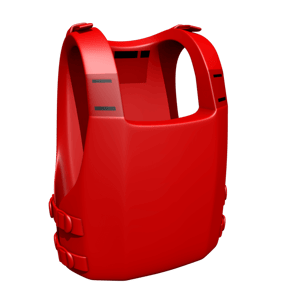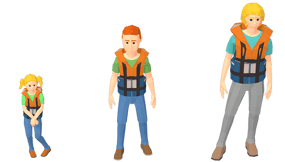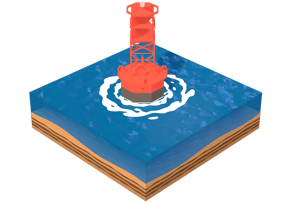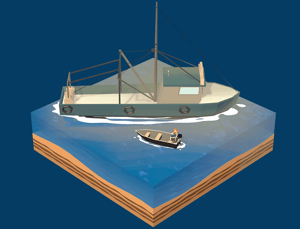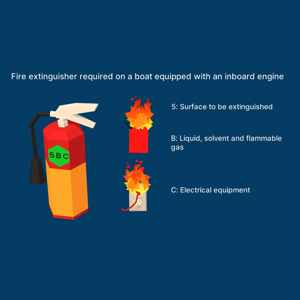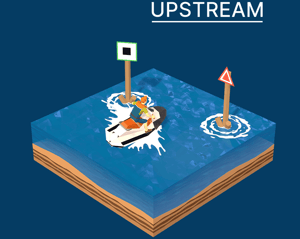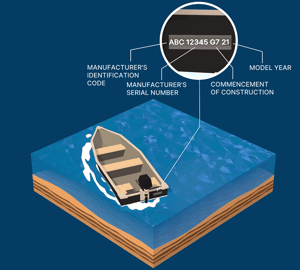Now that you’ve completed your practice test, you’re ready to begin the full boating safety course and earn your card in less than 3 hours. If you have an evening free, you can finish it in one sitting. Once certified, you’ll be able to operate any motorized vessel anywhere in Canada. Your Canadian boating license is valid for life and lets you operate recreational powerboats throughout North America. Sign up — it only takes a few seconds, and your progress will be saved each time you return.
FREE Canadian Boating License Practice Test with answers Ontario, British Columbia, Alberta, Quebec, Manitoba, Saskatchewan, New Brunswick, Nova Scotia, PEI and NL.
Getting ready for your boater exam in Canada requires knowing key navigation rules, safe operating practices, emergency actions, and both federal and state boating regulations.
Try our free practice test to check your knowledge. Just click on the image that shows the correct answer to reveal the right choice.
These sample questions are modeled after those used in official boating safety course —making this the perfect way to prepare for your Canadian boating license.
What is affixed to a boat, attached to the transom on the starboard side above the waterline, to prove that it was built in accordance with the construction requirements?

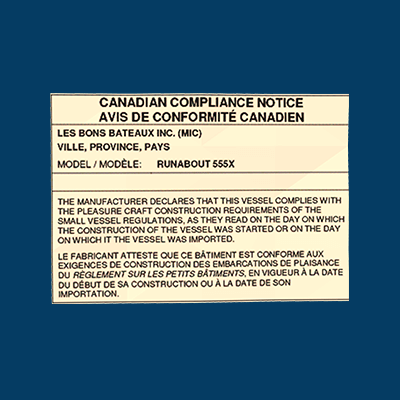

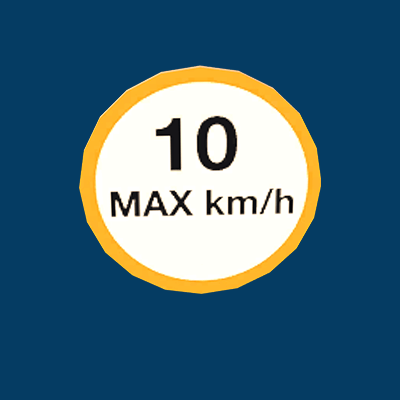
Congratulations!
The right answer is ''the compliance notice''.
The compliance notice is affixed to the boat to prove that it is built in accordance with the construction requirements of the Small Vessel Regulations.
Sorry, wrong answer.
The right answer is ''the compliance notice''.
The compliance notice is affixed to the boat to prove that it is built in accordance with the construction requirements of the Small Vessel Regulations.
Which picture represents the stern?
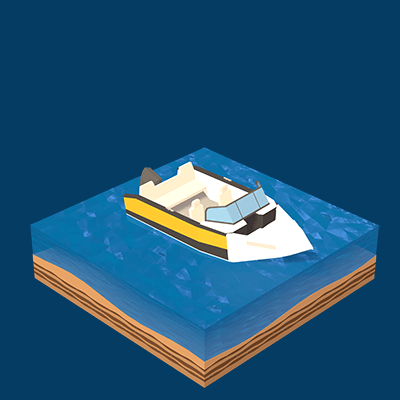
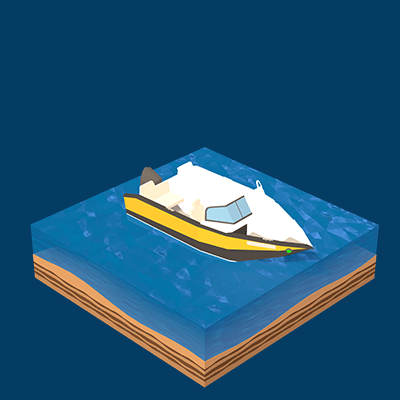

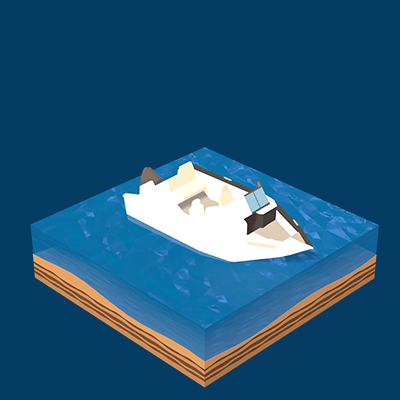
Congratulations, good answer!
The stern is the rear part of the boat.
Sorry, wrong answer.
The stern is the rear part of the boat.
Which picture represents the masthead light ?
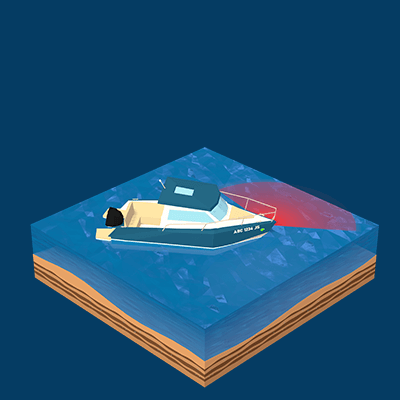
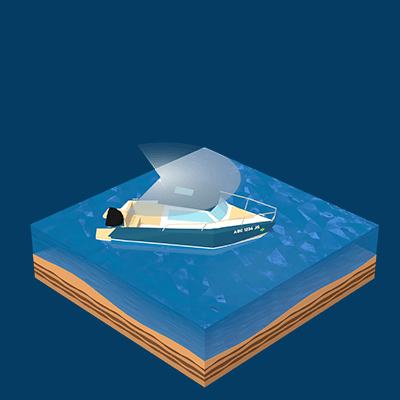
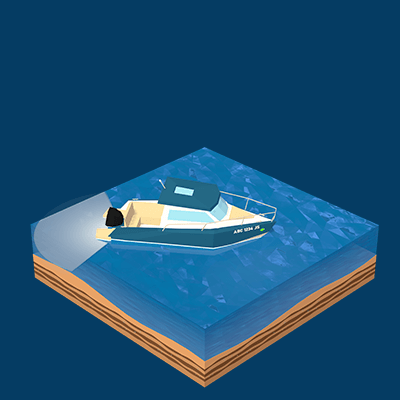
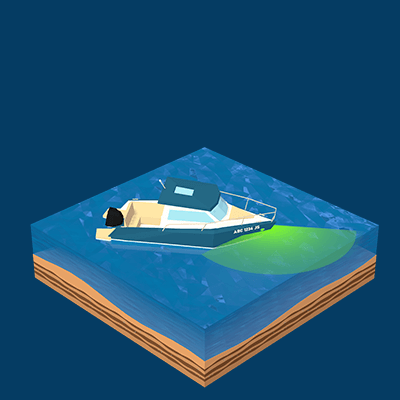
Congratulations, good answer!
The masthead light is a white light projecting towards the front of the boat.
Sorry, wrong answer.
The masthead light is a white light projecting towards the front of the boat.
Which is the proper route that the boat must take?
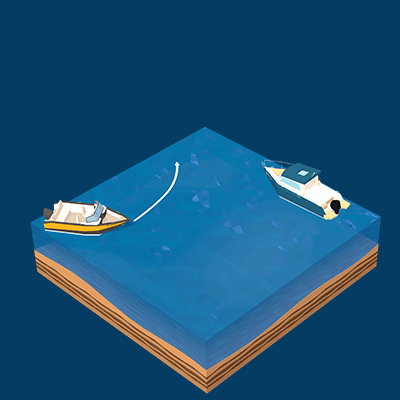


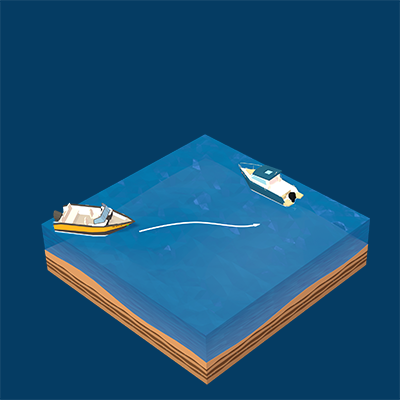
Congratulations, good answer!
As a give-way vessel, the boat is directed to keep out of the way of the other boat, which is a stand-on vessel, by taking early and substantial action to keep well clear.
Sorry, wrong answer.
As a give-way vessel, the boat is directed to keep out of the way of the other boat, which is a stand-on vessel, by taking early and substantial action to keep well clear.
Which illustration represents an information buoy among the following?


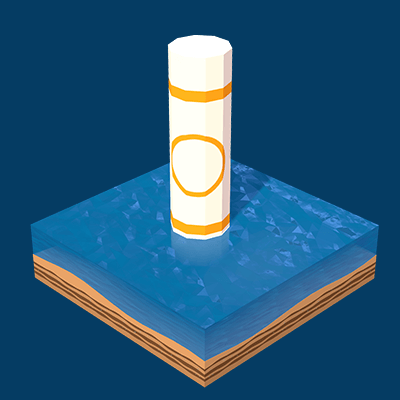
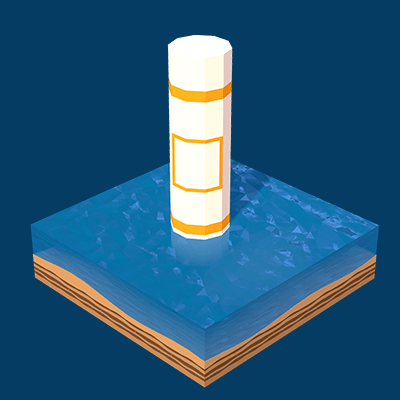
Congratulations, good answer!
The information buoy is the fourth one. It is white, with an orange, open-faced square symbol on two opposite sides and two orange horizontal bands, one above and one below the square symbols.
Sorry, wrong answer.
The information buoy is the fourth one. It is white, with an orange, open-faced square symbol on two opposite sides and two orange horizontal bands, one above and one below the square symbols.
Which illustration represents an anchorage buoy among the following?

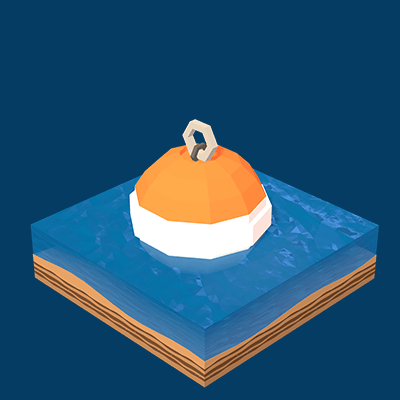

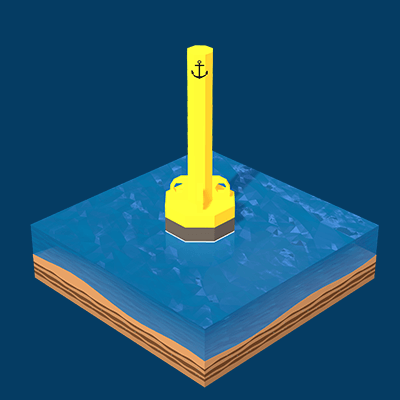
Congratulations, good answer!
The anchorage buoy marks the outer limits of designated anchorage areas. It is yellow with a black anchor on it.
Sorry, wrong answer.
The anchorage buoy marks the outer limits of designated anchorage areas. It is yellow with a black anchor on it.
Which picture is the correct one regarding the priority rules?
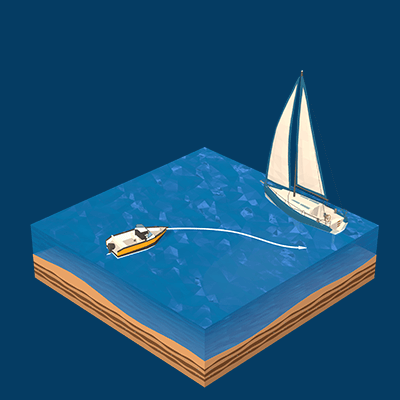

Congratulations, good answer!
As a stand-on vessel, the sailing vessel has the right of way on the power-driven vessel (give-way vessel). The sailing vessel shall maintain her course and speed.
Sorry, wrong answer.
As a stand-on vessel, the sailing vessel has the right of way on the power-driven vessel (give-way vessel). The sailing vessel shall maintain her course and speed.
When a boat capsizes or is submerged, should you stay with the boat or try to reach the shore as quickly as possible?
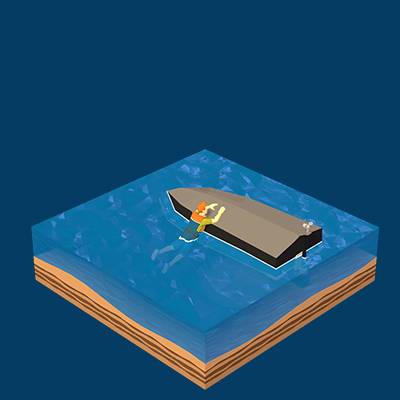
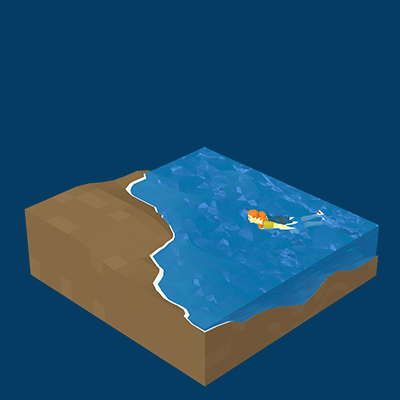
Congratulations, good answer!
When a boat capsizes or is submerged, you must ensure that everyone puts on a personal flotation device or a lifejacket; keep as close to the craft as possible, depending on the circumstances; do a head count of those who were on board and use or display signals to show distress and need of assistance.
Sorry, wrong answer.
When a boat capsizes or is submerged, you must ensure that everyone puts on a personal flotation device or a lifejacket; keep as close to the craft as possible, depending on the circumstances; do a head count of those who were on board and use or display signals to show distress and need of assistance.
Which picture represents the starboard side ?

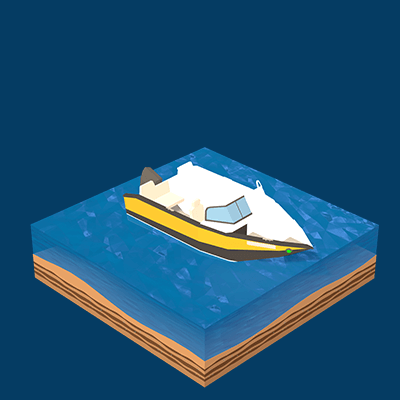


Congratulations, good answer!
The starboard side is the right side of a boat.
Sorry, wrong answer.
The starboard side is the right side of a boat.
Which of the following represents a ''no internal combustion or steam engine'' restriction sign?
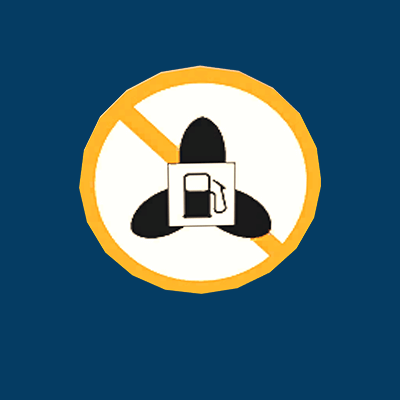
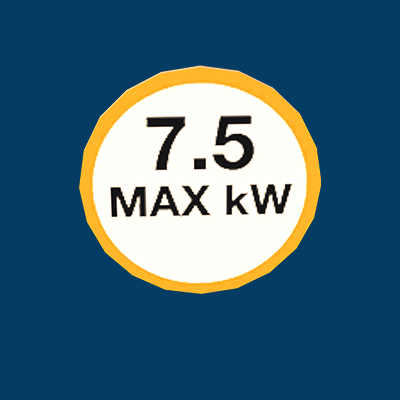

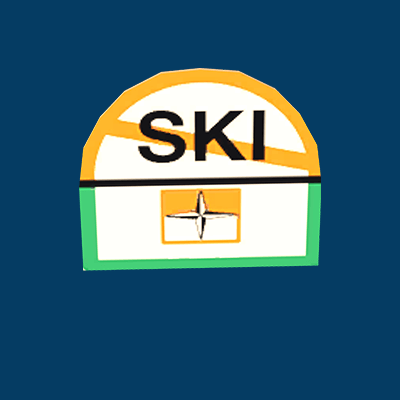
Congratulations, good answer!
The ''no internal combustion or steam engine'' restriction sign is represented by the first image.
Sorry, wrong answer.
The ''no internal combustion or steam engine'' restriction sign is represented by the first image.
Which picture is the graphical representation of a body of water that provides information on depths, traffic lanes and buoys.
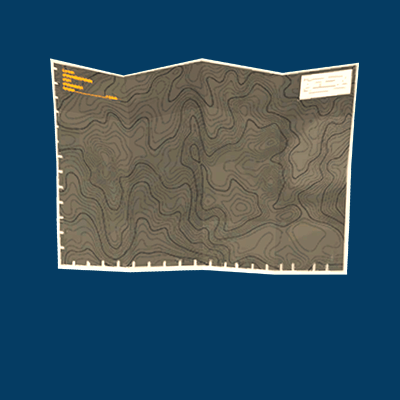
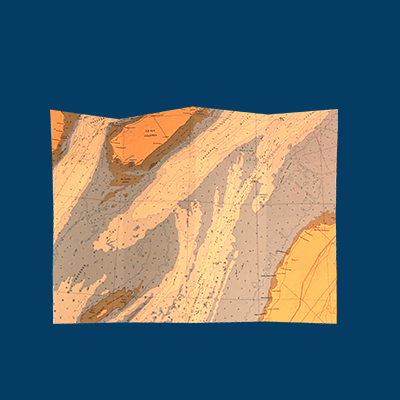
Congratulations, good answer!
Charts are graphic representations depicting areas of water, depicting the depths, underwater hazards, traffic routes, aids to navigation and adjacent coastal areas.
Sorry, wrong answer.
Charts are graphic representations depicting areas of water, depicting the depths, underwater hazards, traffic routes, aids to navigation and adjacent coastal areas.
TRUE
FALSE
Congratulations, good answer!
FALSE. A PFD becomes void if it has been repaired or altered; therefore, it is no longer usable and must be replaced and discarded.
Sorry, wrong answer.
FALSE. A PFD becomes void if it has been repaired or altered; therefore, it is no longer usable and must be replaced and discarded.
Which of the four types of pyrotechnic devices must be used only in daylight?
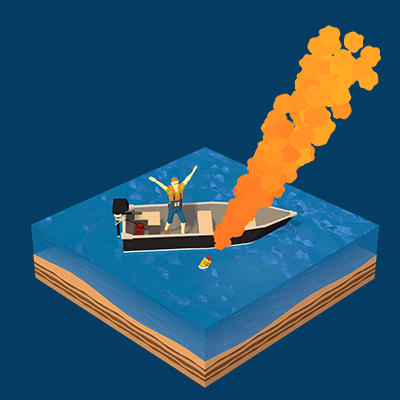

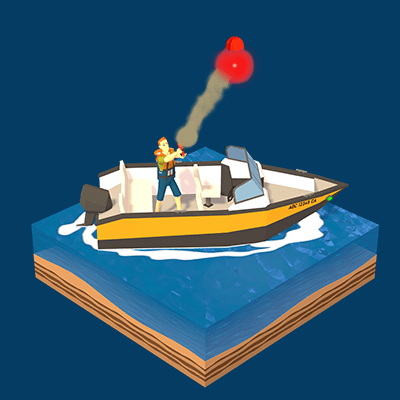

Congratulations, good answer!
The pyrotechnic orange smoke, hand-held or floating, may be used only in daylight.
Sorry, wrong answer.
The pyrotechnic orange smoke, hand-held or floating, may be used only in daylight.
What type of boat uses yellow lights as navigation light?

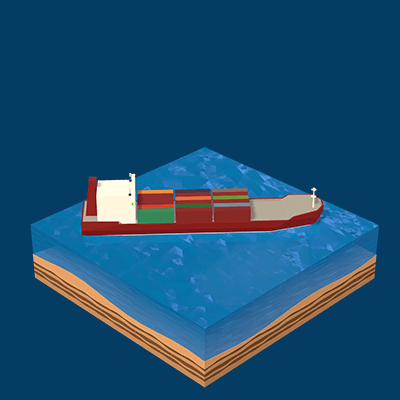
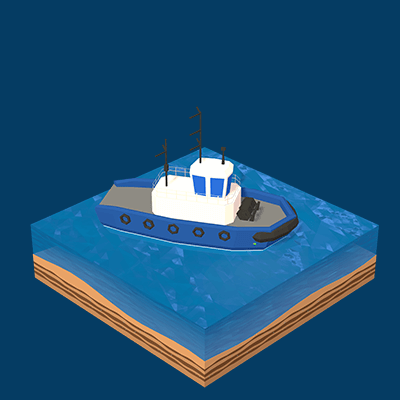
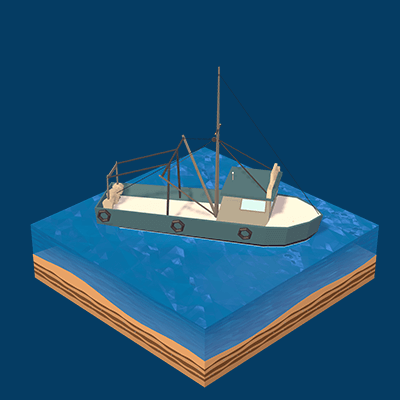
Congratulations, good answer!
A power-driven vessel when towing shall show sidelights, a sternlight, and a towing light (yellow) in a vertical line above the sternlight, and two masthead lights in a vertical line. When the length of the tow, measured from the stern of the towing vessel to the after end of the tow exceeds 200 metres, three such lights in a vertical line shall be displayed.
Sorry, wrong answer.
A power-driven vessel when towing shall show sidelights, a sternlight, and a towing light (yellow) in a vertical line above the sternlight, and two masthead lights in a vertical line. When the length of the tow, measured from the stern of the towing vessel to the after end of the tow exceeds 200 metres, three such lights in a vertical line shall be displayed.
What should we be prepared to show immediately to avoid a collision while navigating at night in a canoe or kayak?
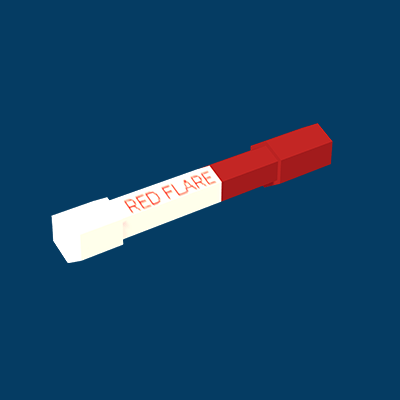
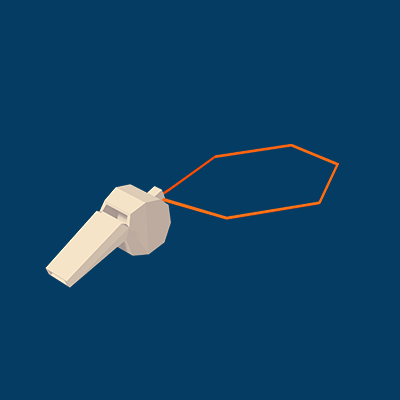

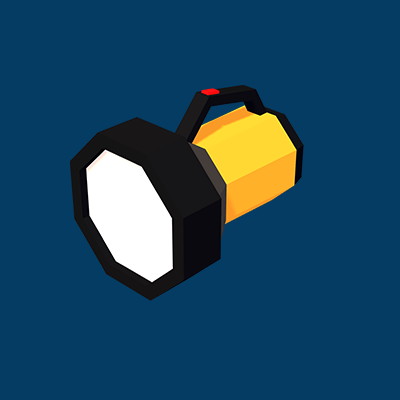
Congratulations, good answer!
The operator of a pleasure craft under sail, of less than 7 metres in length not under power (canoe, kayak), and underway, must have at hand a flashlight or lighted lantern emitting a white light which must be lit in enough time to prevent a collision.
Sorry, wrong answer.
The operator of a pleasure craft under sail, of less than 7 metres in length not under power (canoe, kayak), and underway, must have at hand a flashlight or lighted lantern emitting a white light which must be lit in enough time to prevent a collision.
Which of the following vessels requires a pleasure craft licence?
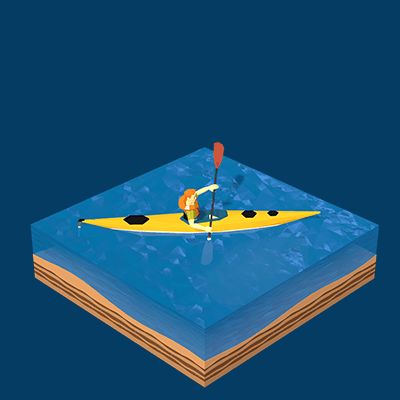
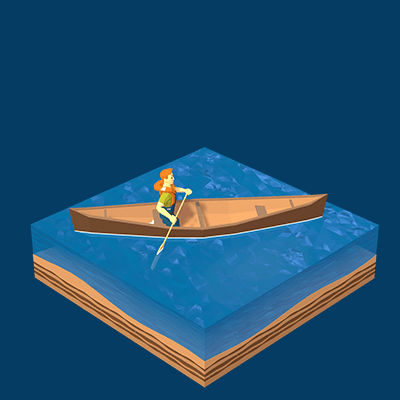

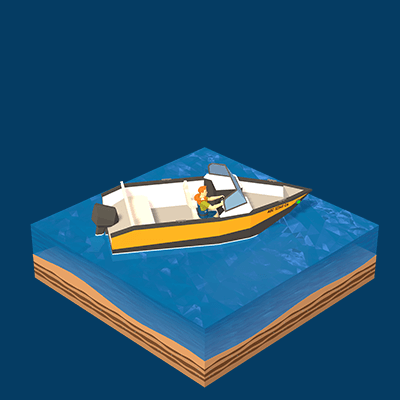
Congratulations, good answer!
Pleasure craft powered, even temporarily, by an engine or engines of 7.5 kW (10 hp) or more, which are kept and operated mainly in Canada, must be licensed or registered, regardless of where they operate in Canada. The numbers must be in block letters, at least 7.5 cm (3”) high, and must contrast with the colour of the background.
Sorry, wrong answer.
Pleasure craft powered, even temporarily, by an engine or engines of 7.5 kW (10 hp) or more, which are kept and operated mainly in Canada, must be licensed or registered, regardless of where they operate in Canada. The numbers must be in block letters, at least 7.5 cm (3”) high, and must contrast with the colour of the background.
Which buoy marks an area where boating is restricted?

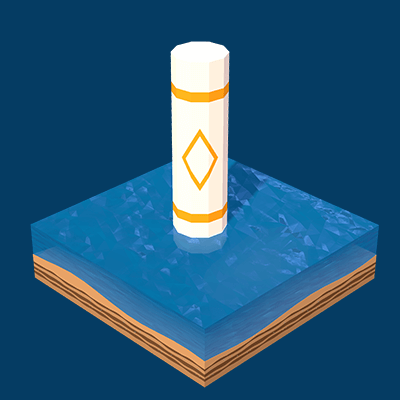


Congratulations, good answer!
The control buoy (the first illustration) fits this definition. A black figure or symbol within the orange circle shows what the restriction is.
Sorry, wrong answer.
The control buoy (the first illustration) fits this definition. A black figure or symbol within the orange circle shows what the restriction is.
At the age of 12
From 16 years old, but it is possible from 12 to 15 years old if the person is accompanied by an adult
At 16 years old
At 8 years old
Congratulations, good answer!
Youth under 16 years of age may not operate a personal watercraft (PWC) under any circumstances, even if they have the PCOC and are accompanied.
Sorry, wrong answer!
Youth under 16 years of age may not operate a personal watercraft (PWC) under any circumstances, even if they have the PCOC and are accompanied.
The following symptoms are related to which condition: slow pulse, confusion, drowsiness, lack of coordination?
Insomnia
Heat stroke
Hypothermia
Carbon monoxide poisoning
Congratulations, good answer!
These symptoms are related to hypothermia.
Sorry, wrong answer.
These symptoms are related to hypothermia.
Which image demonstrates the best practices to have when a diving operation takes place from aboard a pleasure craft?
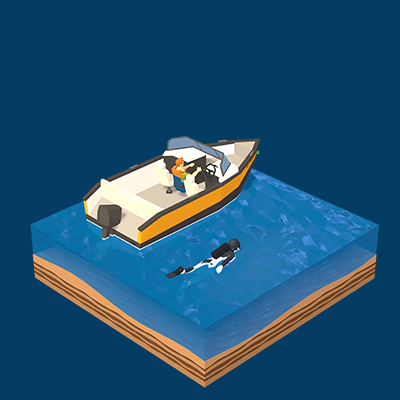

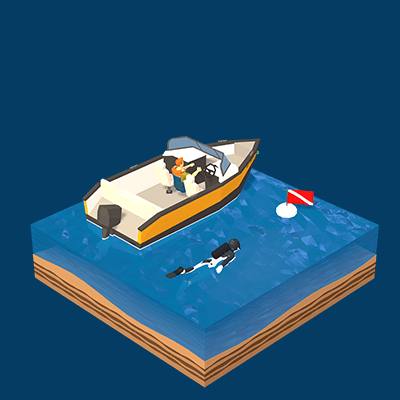
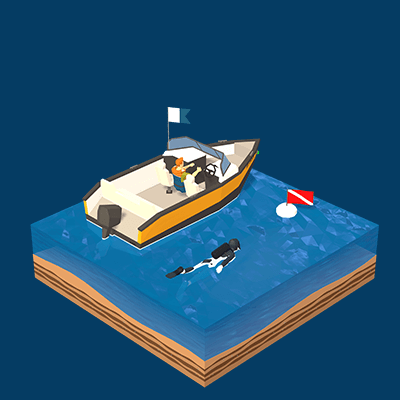
Congratulations, good answer!
The boat must display Flag A (blue and white). However, during diving operations you must install a diving flag in the water. It is Flag A, red and white. It marks an area where scuba or other such diving activity is taking place. It is white, and is mounted by a red flag with a white diagonal stripe, extending from the tip of the hoist to the bottom of the fly.
Sorry, wrong answer.
The boat must display Flag A (blue and white). However, during diving operations you must install a diving flag in the water. It is Flag A, red and white. It marks an area where scuba or other such diving activity is taking place. It is white, and is mounted by a red flag with a white diagonal stripe, extending from the tip of the hoist to the bottom of the fly.
Isolated danger buoy
Port hand buoy
Bifurcation buoy
Starboard hand buoy
Congratulations, good answer!
This buoy is a starboard hand buoy. It must be kept on the right side of the pleasure craft when heading upstream.
Sorry, wrong answer
This buoy is a starboard hand buoy. It must be kept on the right side of the pleasure craft when heading upstream.
Which type of anchor is particularly popular among boaters because of its versatility in all types of seabed?
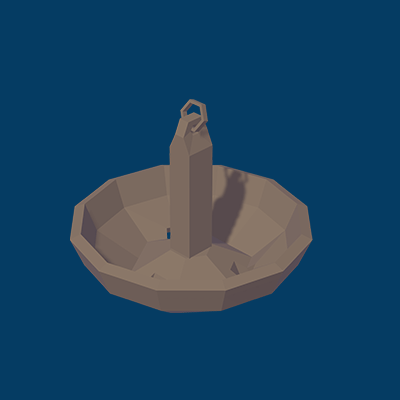
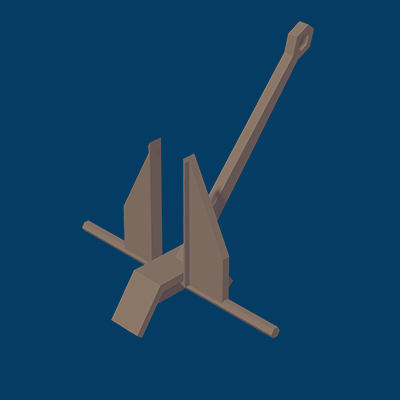


Congratulations, good answer!
The correct answer is the plough anchor. When selecting an anchor, its holding power and the type of seabed in which it will be used must be considered. As well, the anchor must be of proper size depending on the pleasure craft.
Sorry, wrong answer.
The correct answer is the plough anchor. When selecting an anchor, its holding power and the type of seabed in which it will be used must be considered. As well, the anchor must be of proper size depending on the pleasure craft.
Conditions of visibility and traffic density
The draft in relation to the available depth of water and the manoeuvrability of the vessel
Conditions of wind, sea and current, and the proximity of navigational hazards
All of the above
Congratulations, good answer!
All these answers are correct. Every vessel shall at all times proceed at a safe speed so that you can take proper and appropriate action to avoid collision, and be able to stop in a safe distance, and appropriate to the prevailing circumstances and conditions.
Sorry, wrong answer.
All these answers are correct. Every vessel shall at all times proceed at a safe speed so that you can take proper and appropriate action to avoid collision, and be able to stop in a safe distance, and appropriate to the prevailing circumstances and conditions.
A type fire extinguisher
BC type fire extinguisher
AB type fire extinguisher
B type fire extinguisher
Congratulations, good answer!
The right answer is BC type fire extinguisher. It is important to know that for boats equipped with an inboard engine, a BC type fire extinguisher is required on board and must be stored in a convenient and easily accessible place. (Class B: fights combustible liquids (flammable liquid, paint, grease, and oil)+ Class C: fights an electrical fire (motor, fuse box and cables)).
Sorry, wrong answer.
The right answer is BC type fire extinguisher. It is important to know that for boats equipped with an inboard engine, a BC type fire extinguisher is required on board and must be stored in a convenient and easily accessible place. (Class B: fights combustible liquids (flammable liquid, paint, grease, and oil)+ Class C: fights an electrical fire (motor, fuse box and cables)).
What does this image represent?

The HIN (Hull Serial Number)
The registration
The compliance notice
The pleasure craft licence
Congratulations, good answer!
The right answer is The HIN (Hull Serial Number). The HIN must be permanently affixed to the outside upper starboard (right side) corner of the transom (the boat’s rear, flat end — above the waterline) or as close to that area as possible. It is made up of 12 characters.
Sorry, wrong answer.
The right answer is The HIN (Hull Serial Number). The HIN must be permanently affixed to the outside upper starboard (right side) corner of the transom (the boat’s rear, flat end — above the waterline) or as close to that area as possible. It is made up of 12 characters.
The operator of a vessel under oars, canoe or kayak must have at hand a flashlight or lighted lantern emitting a white light which must be lit in enough time to prevent a collision.
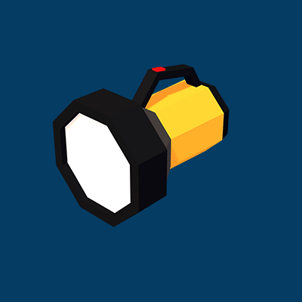
TRUE
FALSE
Congratulations, good answer!
TRUE. Watertight flashlights may also qualify as navigation lights on all non-powered vessels (kayak, canoe, etc.) and sailboats less than 7m in length. During restricted visibility or at night, it could be displayed by the operator to prevent a collision.
Sorry, wrong answer.
TRUE. Watertight flashlights may also qualify as navigation lights on all non-powered vessels (kayak, canoe, etc.) and sailboats less than 7m in length. During restricted visibility or at night, it could be displayed by the operator to prevent a collision.
Junction daybeacons
Alignment markers
Daybeacons
Information signs
Congratulations, good answer!
The signs are daybeacons. These are navigational aids which are fixed unlike the port and starboard buoys which are not. A vessel heading upstream must leave the port day beacon (the one with the black square in the center) to its left.
Sorry, wrong answer.
The signs are daybeacons. These are navigational aids which are fixed unlike the port and starboard buoys which are not. A vessel heading upstream must leave the port day beacon (the one with the black square in the center) to its left.
It is important to keep metal and/or electrical devices at a distance from the magnetic compass because it could display inaccurate information.
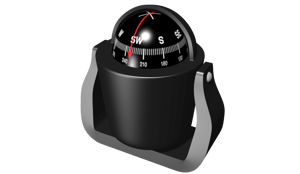
TRUE
FALSE
Congratulations, good answer!
TRUE. A magnetic compass will help the operator of a pleasure craft to find directions.
Sorry, wrong answer.
TRUE. A magnetic compass will help the operator of a pleasure craft to find directions.
Which of the following statements is incorrect regarding carbon monoxide (CO) poisoning?
Carbone monoxide can build up when two vessels are tied to each other
Carbon monoxide poisoning occurs when you breathe too much carbon monoxide and it begins to replace the oxygen in your blood
It is important to run the engine at idle only in well ventilated areas in order to protect yourself and others from carbon monoxide poisoning
Symptoms of carbon monoxide poisoning are: hot, red and dry skin, rapid pulse, rapid and shallow breathing.
Congratulations, good answer!
The first three statements are true. But the symptoms of carbon monoxide poisoning are rather the following: fatigue, headache, nausea, vomiting, shortness of breath, dizziness or fainting, etc..
Sorry, wrong answer.
The first three statements are true. But the symptoms of carbon monoxide poisoning are rather the following: fatigue, headache, nausea, vomiting, shortness of breath, dizziness or fainting, etc..
What is the main purpose of a bucket on a pleasure craft?

Extinguish fires from combustible liquids such as gasoline, oil and grease
Extinguish fires from electrical equipment
To put the fish in
Extinguish A type fires
Congratulations, good answer!
The main purpose of the bucket is to extinguish type A fires which are combustible solids (wood, textile, paper, etc.).
Sorry, wrong answer.
The main purpose of the bucket is to extinguish type A fires which are combustible solids (wood, textile, paper, etc.).
Which of the following does not represent a distress signal?

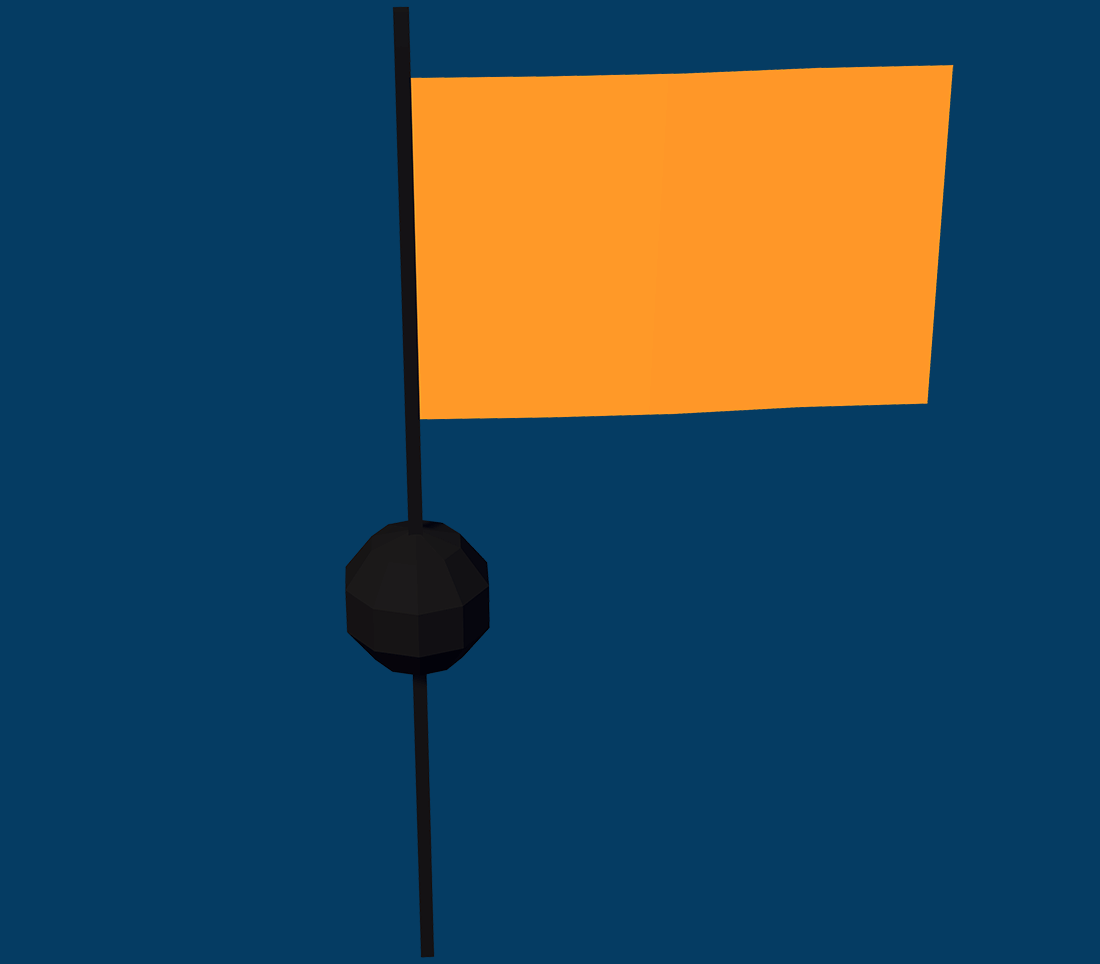


Congratulations, good answer!
The third image is not a distress signal. It is a diving buoy that marks an area where scuba or other such diving activity is taking place.
Sorry, wrong answer.
The third image is not a distress signal. It is a diving buoy that marks an area where scuba or other such diving activity is taking place.
What type of boat uses blue light as a navigation light?




Congratulations, good answer!
The blue flashing light is used by all law enforcement agencies and some government agencies.
Sorry, wrong answer.
A power-driven vessel when towing shall show sidelights, a sternlight, and a towing light (yellow) in a vertical line above the sternlight, and two masthead lights in a vertical line. When the length of the tow, measured from the stern of the towing vessel to the after end of the tow exceeds 200 metres, three such lights in a vertical line shall be displayed.
You must respect a speed limit of no more than 10km/h if you navigate at less than 30 meters from the shoreline?
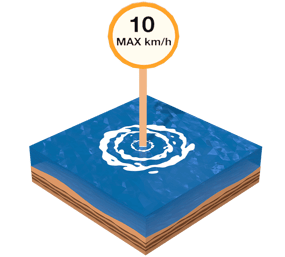
TRUE
FALSE
Congratulations, good answer!
TRUE. Some provinces have adopted speed limits of 10 km/h within 30 m (98’5”) of the shoreline on all waters within their boundaries. This speed limit applies in Ontario, Manitoba, Saskatchewan, Alberta and the inland waters of British Columbia and Nova Scotia. This limit is in effect whether announced or not, with the exception of specific cases.
Sorry, wrong answer.
TRUE. Some provinces have adopted speed limits of 10 km/h within 30 m (98’5”) of the shoreline on all waters within their boundaries. This speed limit applies in Ontario, Manitoba, Saskatchewan, Alberta and the inland waters of British Columbia and Nova Scotia. This limit is in effect whether announced or not, with the exception of specific cases.
The name transfer on the Pleasure Craft License must be done within how many days of buying a used boat?
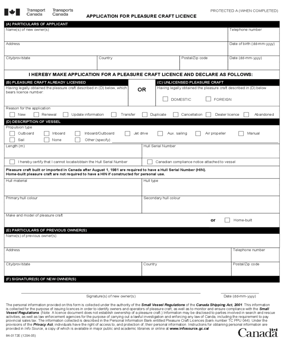
One year
15 days
90 days
On the day that the new owner launches the boat
Congratulations, good answer!
A pleasure craft that is the subject of a transfer of ownership may be operated until the day on which the new owner of the pleasure craft receives a transferred licence, up to a maximum of 90 days from the day of the transfer of ownership, if documents are carried on board confirming the name and address of the new owner and the date of the transfer of ownership.
Sorry, wrong answer.
A pleasure craft that is the subject of a transfer of ownership may be operated until the day on which the new owner of the pleasure craft receives a transferred licence, up to a maximum of 90 days from the day of the transfer of ownership, if documents are carried on board confirming the name and address of the new owner and the date of the transfer of ownership.
The minimum length of a buoyant heaving line for a boat under 24 meters is 15m.
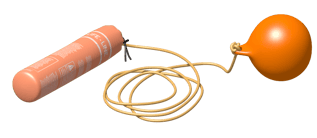
TRUE
FALSE
Congratulations, good answer!
TRUE. The buoyant heaving line must float, be in good condition, be one full length rope, not many ropes tied together, and long enough for the boat you will be using.
Sorry, wrong answer.
TRUE. The buoyant heaving line must float, be in good condition, be one full length rope, not many ropes tied together, and long enough for the boat you will be using.
Which illustration represents a mooring buoy among the following?




Congratulations, good answer!
The mooring buoy is used for mooring or securing vessels, is white and orange, orange covering the top third.
Sorry, wrong answer.
The mooring buoy is used for mooring or securing vessels, is white and orange, orange covering the top third.
The HIN is the manufacturer’s or importer’s confirmation that the vessel is built in accordance with the construction requirements.
All pleasure craft made or imported into Canada must have a Hull Serial Number (HIN) affixed to it.
The HIN must be permanently affixed to the outside upper right corner of the transom.
The HIN is 12 digits long.
Congratulations, good answer!
It's rather the compliance notice that is the manufacturer’s or importer’s confirmation that the vessel is built in accordance with the construction requirements.
Sorry, wrong answer.
It's rather the compliance notice that is the manufacturer’s or importer’s confirmation that the vessel is built in accordance with the construction requirements.
What is this part of the boat called?

Stern
Freeboard
Hull
Bow
Congratulations, good answer!
The front of the boat is called the bow. The aft is the stern.
Sorry, wrong answer
The front of the boat is called the bow. The aft is the stern.
What is this navigation light called?
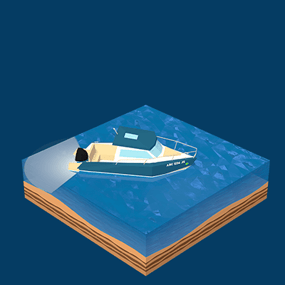
Bowlight
Sternlight
One-way rear light
Masthead light
Congratulations, good answer!
The rear light is called the sternlight.
Sorry, wrong answer
The rear light is called the sternlight.
What is the purpose of this buoy?
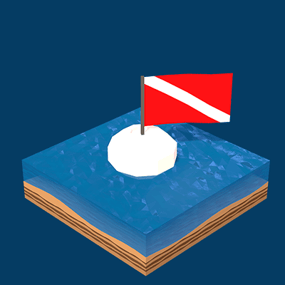
To delimit a swimming area.
To warn of the presence of divers.
To locate a local hazard.
To anchor where the water is too deep for an anchor.
Congratulations, good answer!
The diving buoy marks an area where scuba or other such diving activity is taking place. The diving buoy is white and has a red flag with a white diagonal stripe, extending from the tip of the hoist to the bottom of the fly.
Sorry, wrong answer
The diving buoy marks an area where scuba or other such diving activity is taking place. The diving buoy is white and has a red flag with a white diagonal stripe, extending from the tip of the hoist to the bottom of the fly.
What is this buoy called?
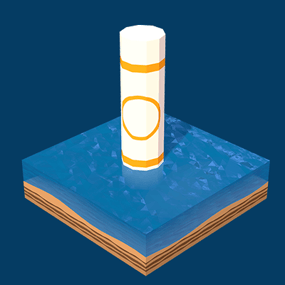
Information buoy
Cautionary buoy
Control buoy
Hazard buoy
Congratulations, good answer!
It's a control buoy. It marks an area where boating is restricted. It is white with an orange circle located between two horizontal bands of the same color. The current restriction is written inside the circle.
Sorry, wrong answer
It's a control buoy. It marks an area where boating is restricted. It is white with an orange circle located between two horizontal bands of the same color. The current restriction is written inside the circle.
What is this flare called?
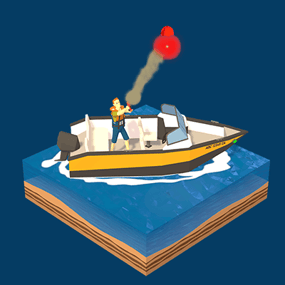
Rocket parachute flare
Rising red flare
Hand flare
Multi-star flare
Congratulations, good answer!
It is the rocket parachute flare. It creates a simple red star that rises up to 300m and comes down slowly with a parachute. It is easily seen from the ground or air, and burns for at least 40 seconds.
Sorry, wrong answer
It is the rocket parachute flare. It creates a simple red star that rises up to 300m and comes down slowly with a parachute. It is easily seen from the ground or air, and burns for at least 40 seconds.
Which picture represents a SOLAS lifejacket?

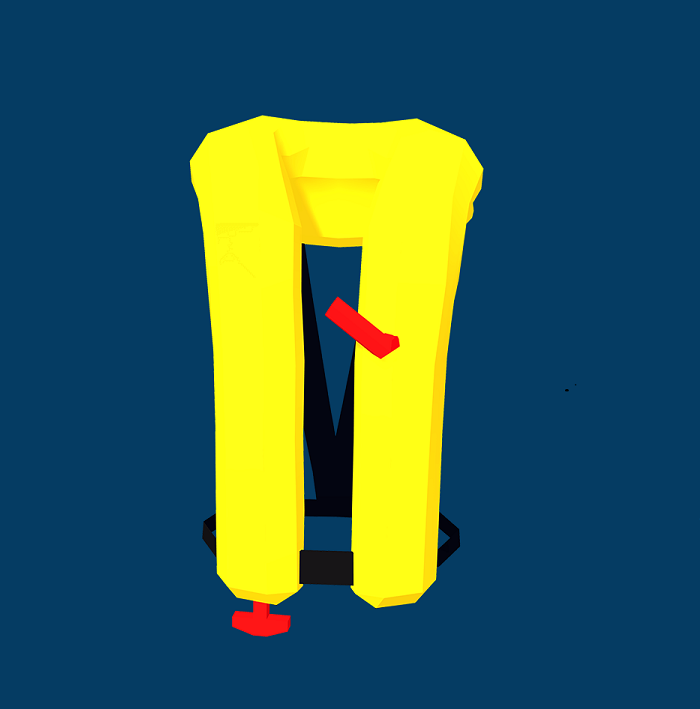

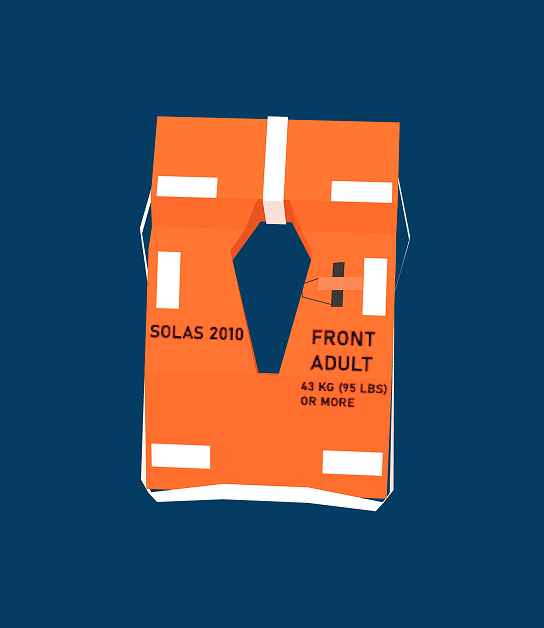
Congratulations, good answer!
Safety of Life at Sea (SOLAS) lifejackets meet very high performance standards and are approved for all vessels. The SOLAS will turn you on your back in seconds to keep your face out of the water while unconscious.
Sorry, wrong answer.
Safety of Life at Sea (SOLAS) lifejackets meet very high performance standards and are approved for all vessels. The SOLAS will turn you on your back in seconds to keep your face out of the water while unconscious.
Which of the following vessels is not a human-powered pleasure craft?




Congratulations, good answer!
The last image is not a human-powered pleasure craft. It is considered as a power-driven vessel since it is propelled by machinery.
Sorry, wrong answer.
The last image is not a human-powered pleasure craft. It is considered as a power-driven vessel since it is propelled by machinery.
Which of the following statements is not a feature of the PFD?
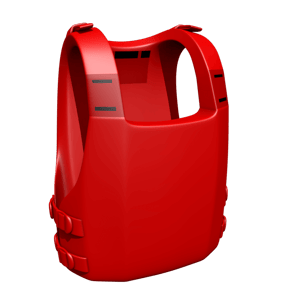
The PFD is more comfortable than a lifejacket.
The PFD offers a higher degree of buoyancy than a lifejacket.
There are specialized PFDs for several sports.
Unlike a life jacket, a PFD won't necessarily turn you on your back.
Congratulations, good answer!
It is the lifejacket that provides a higher degree of buoyancy. Not the PFD.
Sorry, wrong answer.
It is the lifejacket that provides a higher degree of buoyancy. Not the PFD.
What is the name of this anchor?

Grapnel anchor
Plough anchor
Mushroom anchor
Danforth anchor
Congratulations, good answer!
It is the mushroom anchor. It is suitable where the seabed is composed of silt or fine sand. It is shaped like an inverted mushroom, the head becoming buried in the silt.
Sorry, wrong answer
It is the mushroom anchor. It is suitable where the seabed is composed of silt or fine sand. It is shaped like an inverted mushroom, the head becoming buried in the silt.
Which of the following vessels is a human-powered pleasure craft?
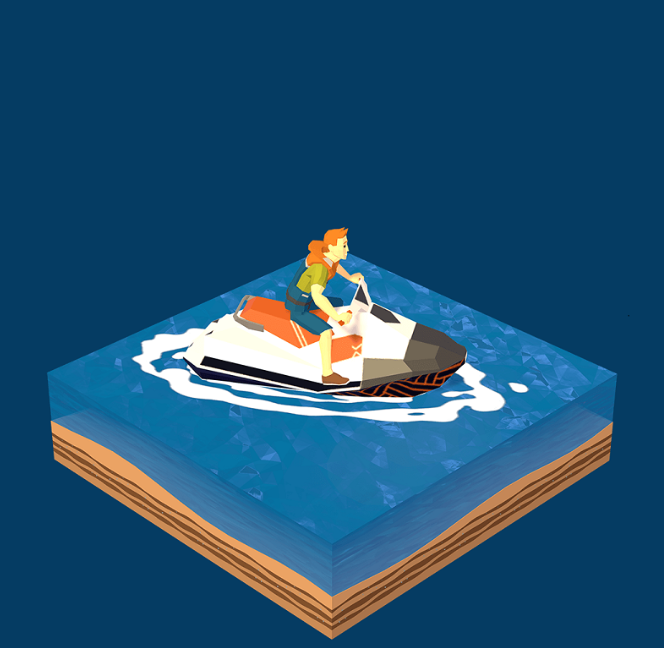



Congratulations, good answer!
In this scenario, the canoe is considered as a human-powered pleasure craft since the person is using an oar. If you install a motor on the canoe, it becomes a power-driven vessel.
Sorry, wrong answer.
In this scenario, the canoe is considered as a human-powered pleasure craft since the person is using an oar. If you install a motor on the canoe, it becomes a power-driven vessel.
What is this navigation light called?
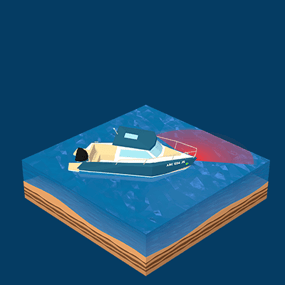
Port sidelight
Sternlight
Bowlight
Starboard sidelight
Congratulations, good answer!
The red forward light is called the port sidelight.
Sorry, wrong answer
The red forward light is called the port sidelight.
What type of restriction applies if you encounter this sign?
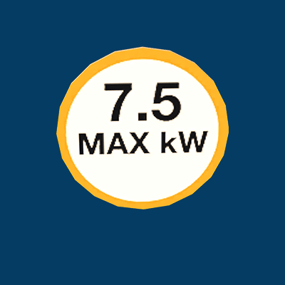
Gas engines are forbidden
A standardized speed limit
A boat size limit
A power limit
Congratulations, good answer!
This restriction sign represents a power limit.
Sorry, wrong answer
This restriction sign represents a power limit.
Which of the following vessels is a trawling vessel?




Congratulations, good answer!
The last picture is a trawling vessel. Stay well clear from these boats.
Sorry, wrong answer.
The last picture is a trawling vessel. Stay well clear from these boats.
3 easy steps
to get your Pleasure Craft Operator Card
STUDY AT YOUR OWN PACE
- Register and pay only $ 59.95 (online course, final test and the card included).
- Complete an easy-to-read study guide.
TAKE THE FINAL TEST
- Transport Canada's official final test.
- Free tests retries - Risk free.
- Open-book final test.
PRINT YOUR CERTIFICATE
- Print your temporary card immediately and start boating now! It is valid for 60 days.
- Your official Pleasure Craft Operator Card will be mailed within 30 days.
- The card is good for life.
